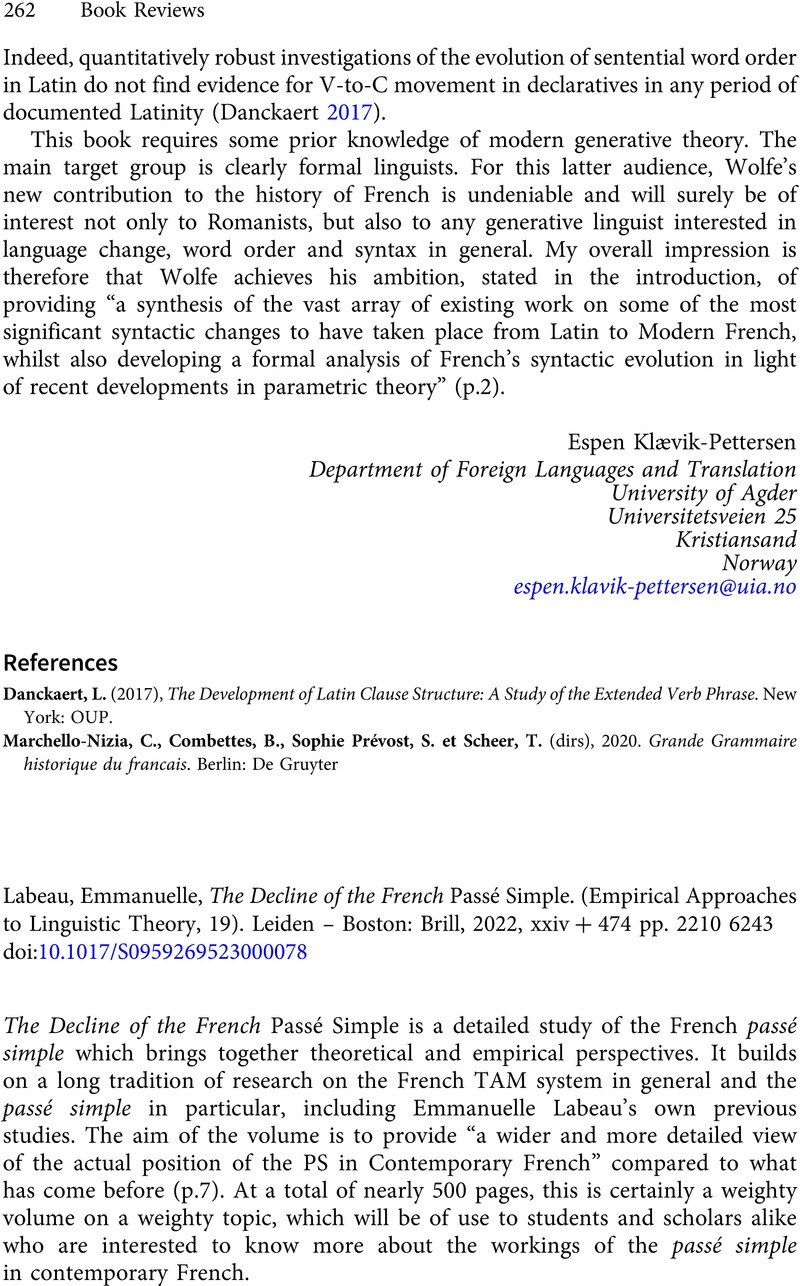No CrossRef data available.
Article contents
Emmanuelle Labeau, The Decline of the French Passé Simple. (Empirical Approaches to Linguistic Theory, 19). Leiden – Boston: Brill, 2022, xxiv + 474 pp. 2210 6243
Review products
Emmanuelle Labeau, The Decline of the French Passé Simple. (Empirical Approaches to Linguistic Theory, 19). Leiden – Boston: Brill, 2022, xxiv + 474 pp. 2210 6243
Published online by Cambridge University Press: 15 June 2023
Abstract
An abstract is not available for this content so a preview has been provided. Please use the Get access link above for information on how to access this content.

- Type
- Book Review
- Information
- Copyright
- © The Author(s), 2023. Published by Cambridge University Press



